Research
1. Key words:
Computational fluid dynamics, Particle method, Moving Particle Semi-implicit (MPS) Method, Smoothed Particle Hydrodynamics (SPH), Moving Particle Hydrodynamics (MPH), Discrete Element Method (DEM), Lagrangian method, Introducing Machine Learning into Physics Simulations, Naval achitecture, Marine Engineering, Mechanical Engineering, Civil Engineering, Computer graphics, Shipping water, Green water, Ship motion in rough seas, Added resistance due to waves, Sloshing, Jet breakup, Analysis of spar behavior of offshore wind turbines, Liquid-sealed vacuum pumps, Fluid lubrication, Highly viscous fluid.
2. Movie
(0) Development of simulation method using particle method for liquid-sealed vacuum pumps
By calculating the "density," "temperature," and "pressure" of gases and liquids, we are developing an optimal design with minimal energy loss to improve pump performance and develop highly reliable products. The results of this research were presented at the international conference Particles 2023 in Milan, Italy.
<Reference>
Taro Kaito , Kazuya Shibata, Takeshi Takanashi, Naoyuki Yasuda, "Numerical analysis of liquid ring pump by the MPS method", VIII Interanational Conference on Particle-Based Methods, Particles 2023, Milan, Italy, 9-11 October 2023
https://particles2023.cimne.com/event/contribution/79f06028-da83-11ed-9a1c-000c29ddfc0c
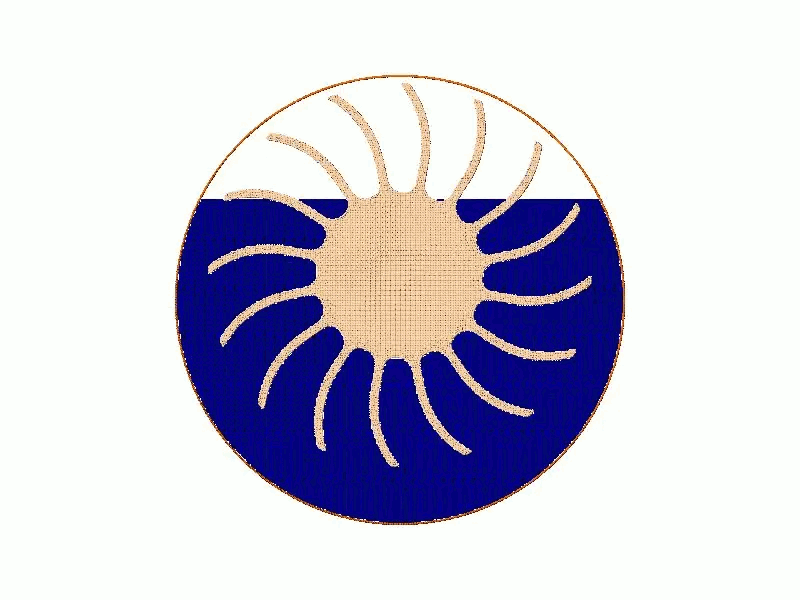 (a) Water ring shape
(a) Water ring shape
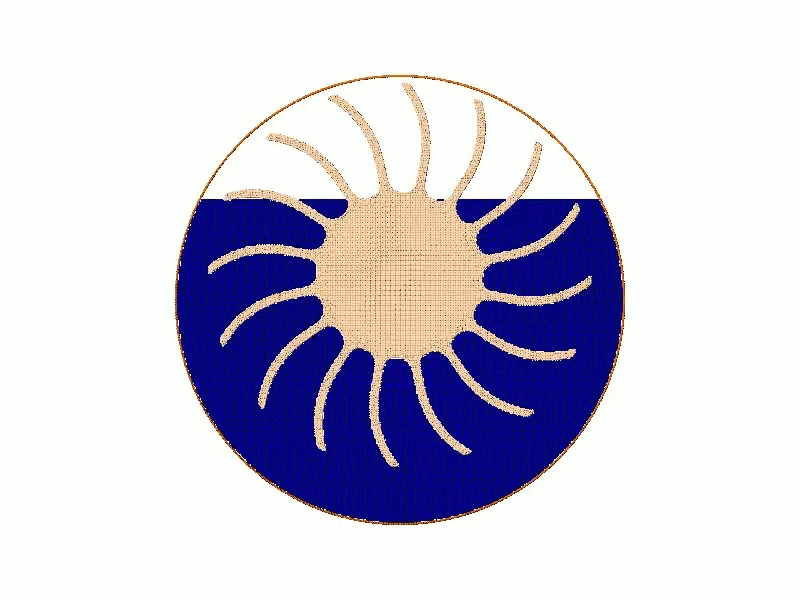 (b)Density
(b)Density
 (c) Temperature
(c) Temperature
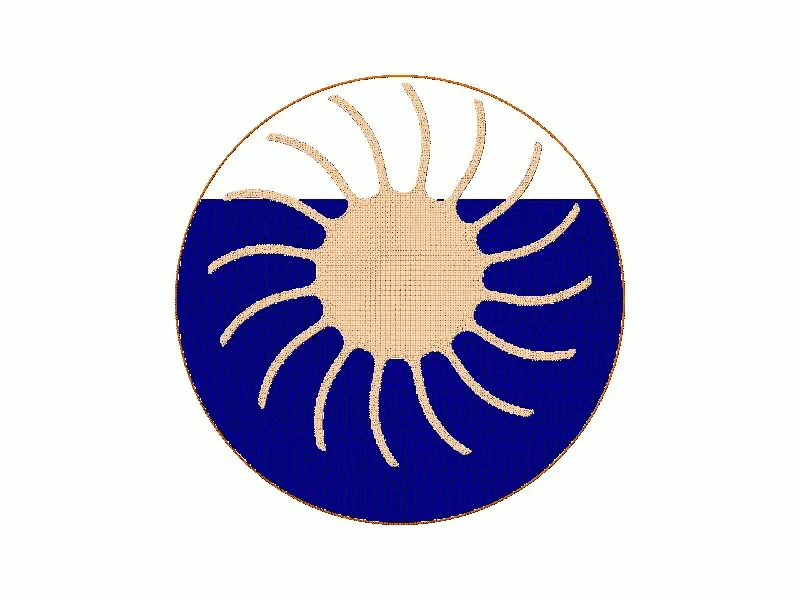 (d) Pressure
(d) Pressure
1) Tsunami simulation using the overlapping particle technique
The simulation time of particle simulation is drastically reduced by using the developped technique which allows multi-resolution.
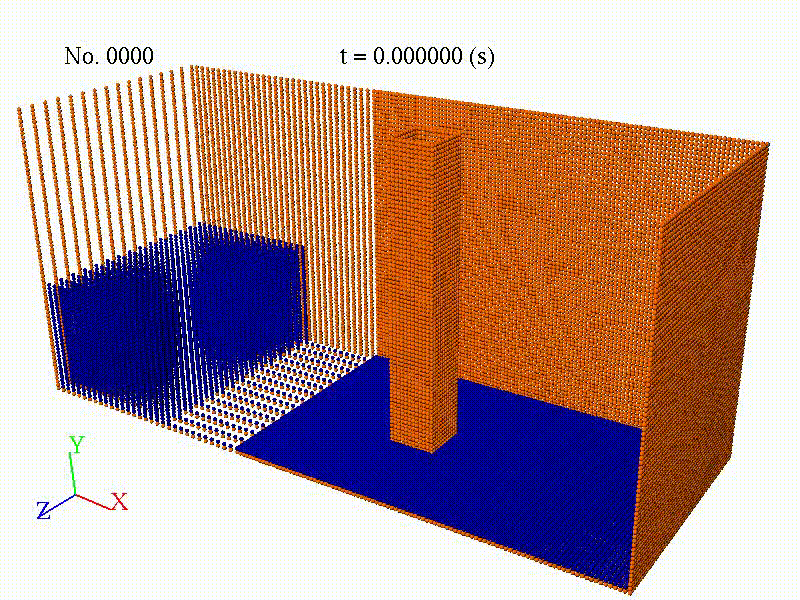
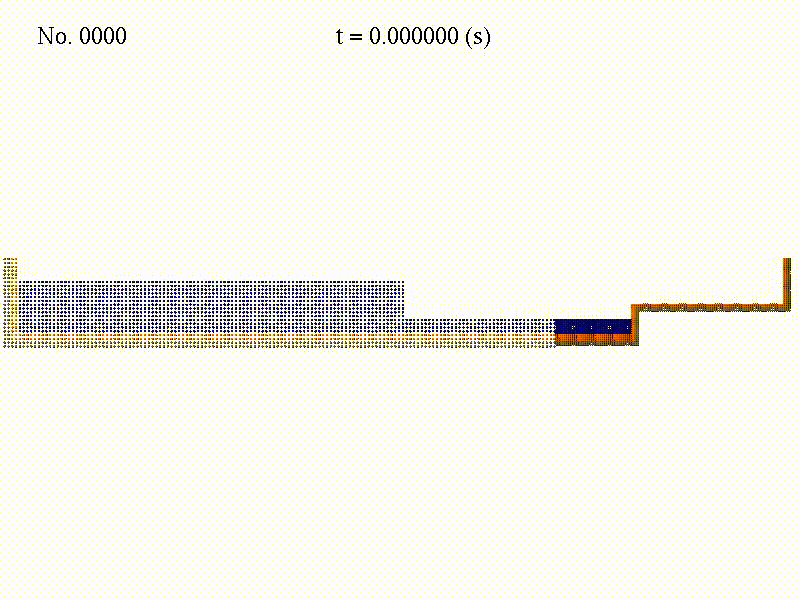
2) Green water on a ship deck
The impact force has been velified.
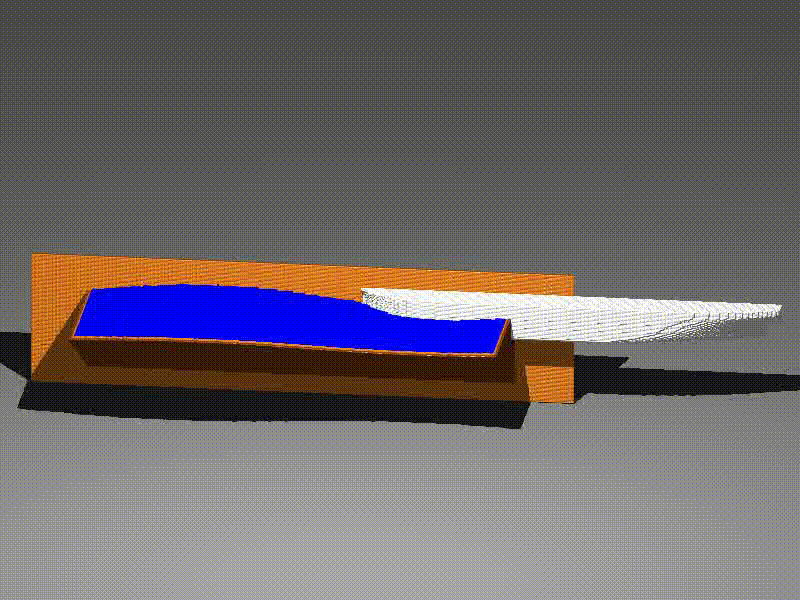
3) Ship-wave interaction
(A ship motion model and numerical wave tank were developed. )

4) Free-fall lifeboat
The acceleration acting on a free-fall lifeboat was successfully simulated.
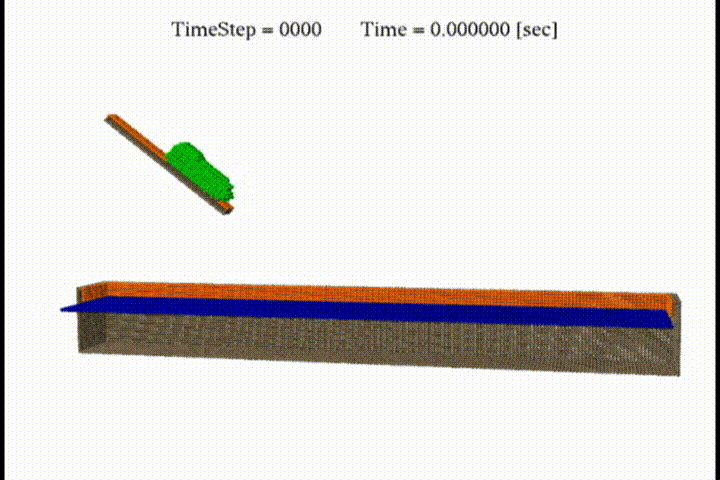
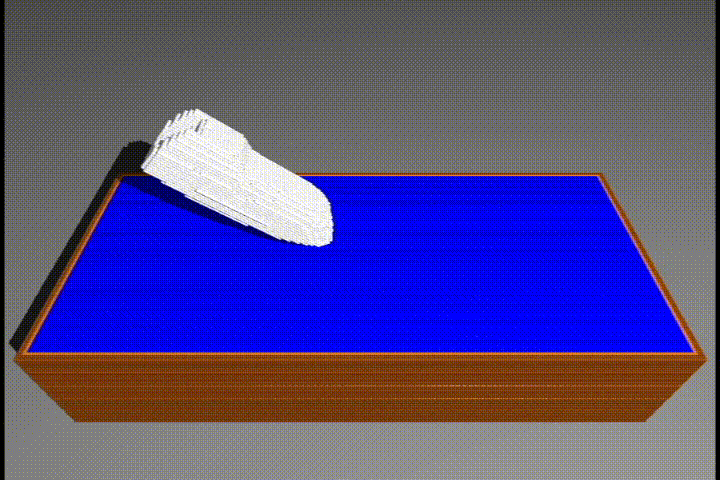
5) Karman's vortex
By improving the boundary condition of the MPS method, Karman's vortices were successfully simulated.
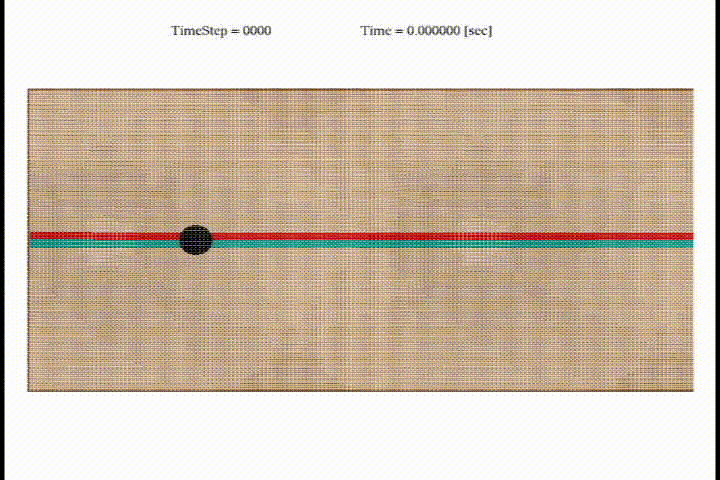
6) Highly viscous fluid simulation
A new algorithm for simulationg the viscous term was developped.
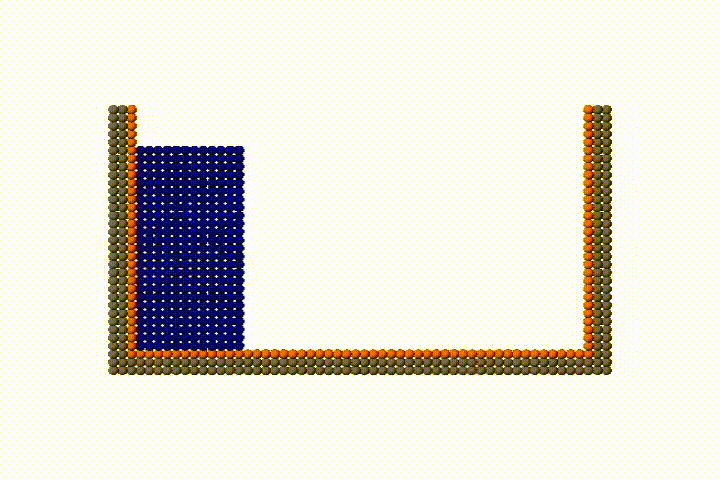
7) Surface tension simulation
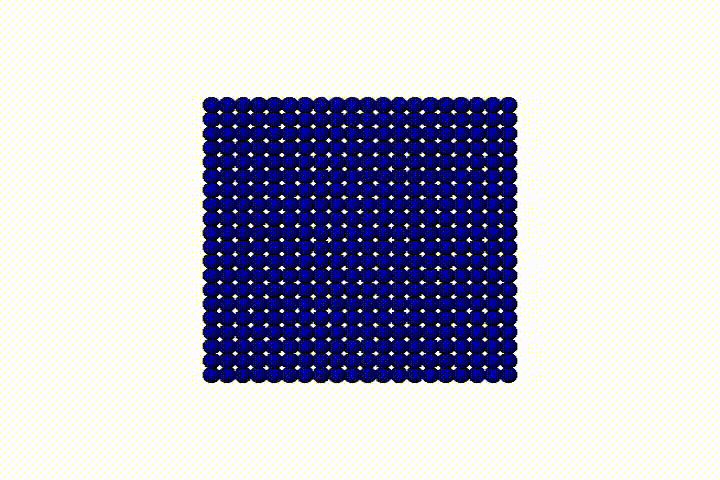
3. Outline
There are many phenomena around us for which the details have not yet been clarified. We are conducting research to elucidate these phenomena using numerical simulation, to construct new systems, and to optimize the design. We have developed techniques to simulate the phenomena of seawater impingement on the deck of a ship and ship motions using a new numerical method called the particle method. Using these techniques, we are conducting research on evaluating and improving the safety of ships and offshore structures.
In the wake of the Great East Japan Earthquake, the importance of disaster prevention and mitigation has been reaffirmed. In our laboratory, we are conducting simulations to analyze the behavior of tsunamis near the coast and on land. Our research contributes to the realization of a safer society by utilizing simulation methods.
For inquiries about joint or funded research, please contact us by e-mail. (E-mail: shibata.kazuya(at mark)sys.t.u-tokyo.ac.jp )